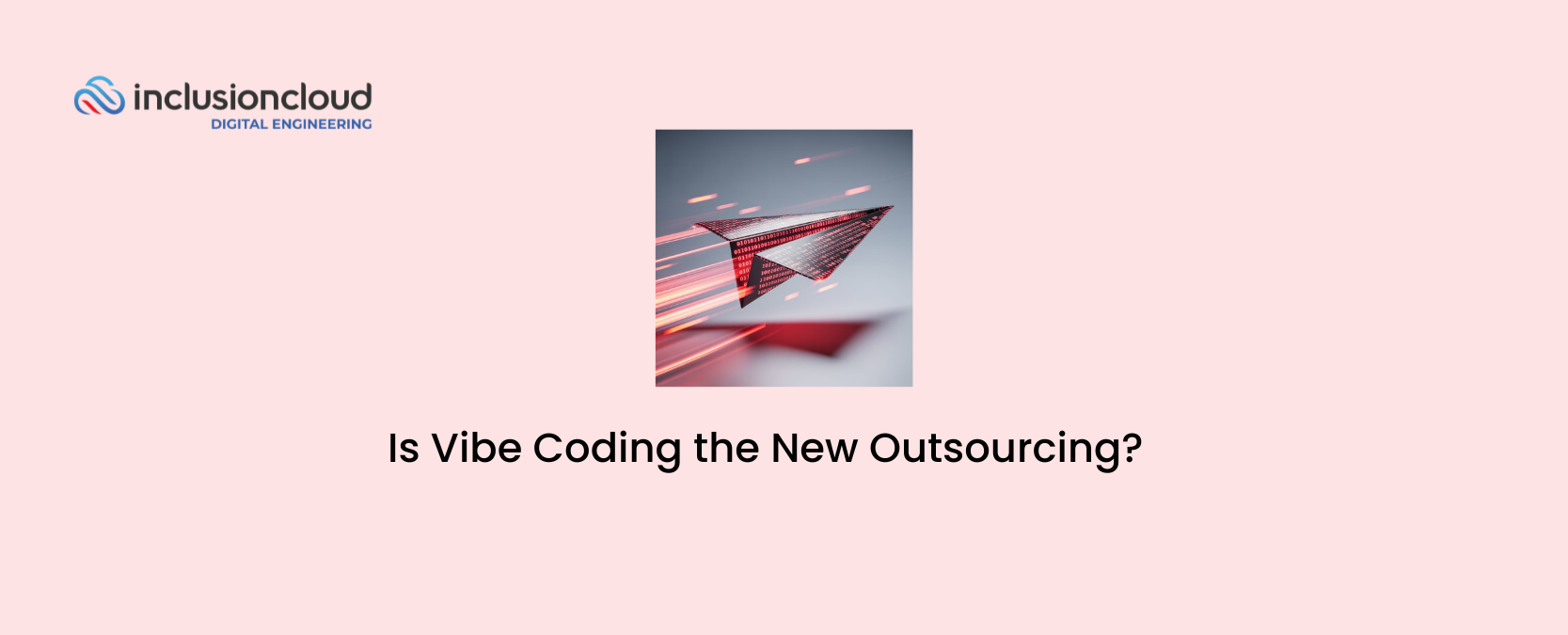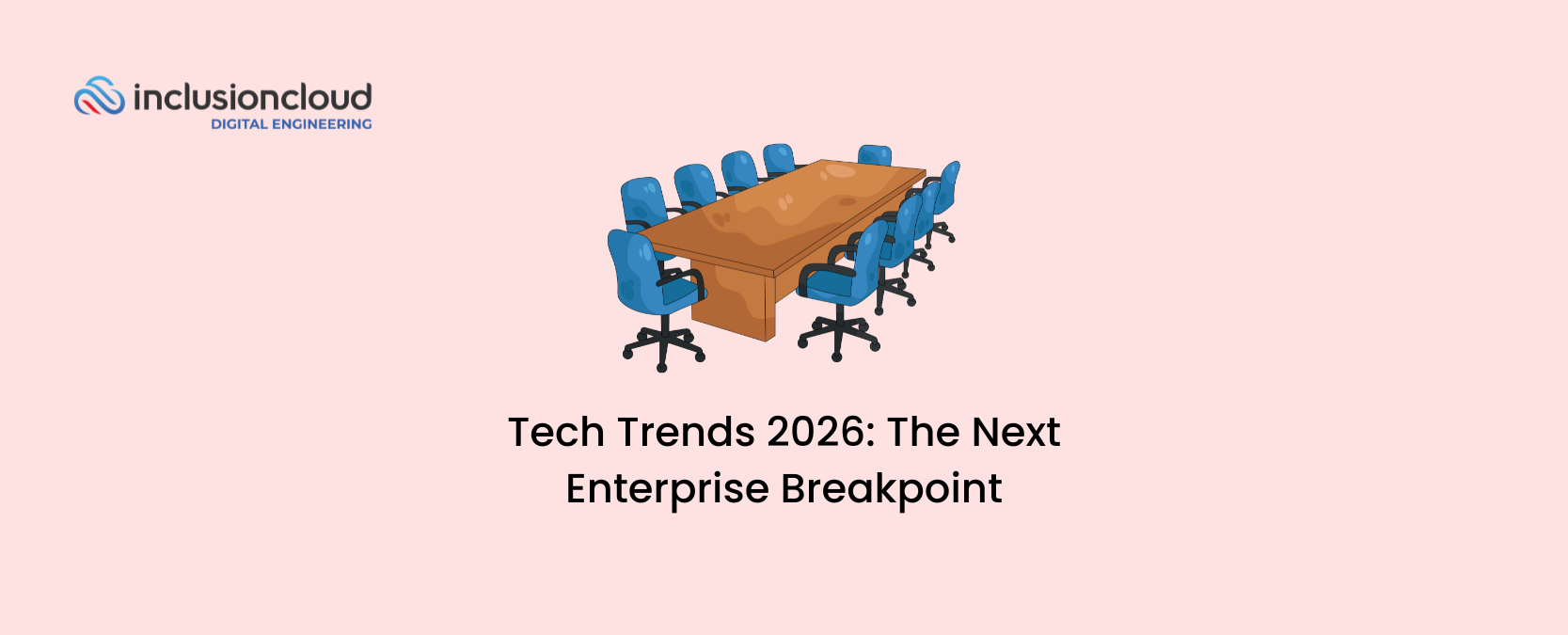You don’t need a dev team anymore.
You don’t even need to outsource.
Just open your laptop, describe what you want, and the AI builds it.
That’s the promise of vibe coding.
And it’s giving rise to a new kind of entrepreneur and digital builder.
We like to call this figure the Digital Robinson Crusoe.
Because that person is someone who wants—or needs—to launch a digital product completely on their own.
But this brings up a few important questions that are worth exploring more deeply.
- Can one person really build and launch a software product entirely alone?
- Is vibe coding actually replacing software outsourcing?
- Or is it just a shortcut that looks better than it really is?
While it’s true that one person can now accelerate prototyping and automate important parts of the development process, it’s not as simple or as straightforward as it sounds. And certainly not as effortless as it’s being marketed lately.
Many of these solo-built products rely on what we call vibe architecture, which is a natural byproduct of vibe coding.
In simple terms, it’s code that works but wasn’t really designed or engineered.
There are no clean layers, no modular components, and no plan for scaling. Just a collection of functional pieces stitched together to get things running—until they break.
At Inclusion Cloud, we’ve been watching the rise of these Digital Robinson Crusoes.
They build fast on their own island. But when the storm hits or the product starts to grow, they’re left without a map, without a team, and without a solid foundation.
So let’s take a closer look:
What can vibe coding actually replace?
And where does outsourcing still offer real, long-term value?
How Vibe Coding Is Framed Today
We already explored the definition of vibe coding in our article “If AI Can Write Code, What’s Left for Developers?”
We like to think of vibe coding as a paper plane. It’s quick to fold, easy to launch, and gets off the ground fast. That’s its charm: it delivers something that flies with minimal effort. But just like a paper plane, it wasn’t made to last. It can’t carry weight. It can’t handle turbulence. And the further it tries to go, the more obvious its fragility becomes.
Some analysts see this as the next evolution of no-code/low-code platforms. While no-code/low-code relied on visual interfaces and drag-and-drop logic, vibe coding removes even those barriers. It turns plain language into executable software, allowing users to build applications without needing to understand syntax or architecture.

This shift is accelerating the citizen developer trend, opening up software creation to people who traditionally weren’t part of dev teams. Sure, business teams have been involved in building digital products for years now. But being involved is not the same as having the technical skills to build them. What’s different today is that those same teams can now go from idea to working prototype without ever touching code.
Let’s explore the differences between these approaches in more detail.
What’s the Difference Between No-Code, Low-Code, and Vibe Coding?
The idea of the citizen developer isn’t new. No-code platforms were the first step in making software creation accessible to non-developers. These tools gave business users a way to build forms, dashboards, and workflows using drag-and-drop interfaces. It was limited, but safe. You worked inside a predefined sandbox, and the platform itself handled guardrails like security, data structure, and deployment.
Low-code expanded those capabilities. It let semi-technical users—often people in IT or operations—go further. You could integrate APIs, write some business logic, or build automations beyond what no-code allowed. But again, the boundaries were clear. You were extending a managed system, and the risks were mostly contained by the platform.
Here’s how the three approaches compare across key dimensions:
| Feature/Aspect | No-Code | Low-Code | Vibe Coding |
| Interface | Visual-only builders (e.g., Bubble, Wix) | Drag-and-drop with some coding (e.g., OutSystems, Mendix) | Natural language interface powered by LLMs |
| Code Visibility | Hidden from user | Partially visible and editable | Fully exposed AI-generated code |
| Technical Skills | None required | Basic scripting knowledge | Varies—prompting is enough, but review requires expertise |
| Architecture | Fixed templates and schemas | Predefined but slightly flexible | Generated on the fly, often fragile or unstructured |
| Time-to-Market | Very fast for small tools | Fast with some customization | Extremely fast for early MVPs |
| Scalability | Low | Medium | Low unless re-engineered |
| Customization | Limited | Moderate | High flexibility, but inconsistent quality |
| Who Uses It | Designers, business teams | Internal dev teams, startups | Founders, solo devs, non-technical builders |
Vibe coding changes the rules.
It removes the boundaries entirely. You’re no longer building inside someone else’s architecture—you’re generating code from scratch, piece by piece, often without understanding how those pieces fit together. Instead of assembling a tool, you’re assembling a system. And that’s where the real risk begins.
Because vibe coding gives you freedom, but not structure. You can ask for anything—but there’s no guarantee the output is modular, scalable, or even maintainable. And unlike no-code or low-code platforms, there’s no safety net. The AI gives you code that works, but it doesn’t explain why it works, whether it’s secure, or what will happen when your app grows.
In practice, this leads to what we call vibe architecture: a collection of functional snippets that were never designed as a coherent system. It looks like a product, but it lacks the backbone of software engineering. There’s no layered design. No clear separation of concerns. No documentation or test strategy. It’s code that runs—until it doesn’t.
And here’s the irony. In trying to remove technical barriers, vibe coding introduces new technical debt—the kind that’s harder to spot because everything feels custom and fast.
A New Way of Outsourcing Software Development?
For years, building software meant navigating layers of complexity: distributed teams, different time zones, endless coordination. Sprint planning, daily stand-ups, QA handoffs, and miscommunications were all part of the process. Delays were common, often caused by waiting on other teams, unclear requirements, or shifting priorities.
Then came vibe coding.
No Slack threads.
No sprint planning.
No waiting on approvals, meetings, or handoffs.
No merge conflicts from a teammate’s half-finished branch.
Just you, an idea, and a generative AI that can turn prompts into code.
It feels like a dream. A Robinson Crusoe developer building alone on their island, free from team friction and red tape. And in some cases, like prototyping a new idea or automating a workflow, it works remarkably well.
But only up to a point.
Because while vibe coding can handle the early steps—building boilerplate, testing a flow, even creating a functional MVP—it struggles beyond that. It can’t design scalable architecture. It can’t anticipate edge cases. It can’t debug live failures or optimize for real-world performance. When it breaks, you’re on your own.
In Which Aspects Vibe Coding Could Replace IT Outsourcing?
To be clear, there are scenarios where vibe coding reduces or delays the need for traditional outsourcing:
- Fast prototyping: AI tools can turn a vision into working code in hours.
- No vendor selection required: You skip the RFPs, vetting, and negotiation cycles.
- Zero coordination overhead: No standups, no misalignment. You are the product owner, designer, and developer.
- Lower initial costs: No contracts, no time tracking, no team ramp-up.
In early stages, these benefits are real. And for small, internal tools, vibe coding might be all you need.
Why IT Outsourcing Still Will Be Necessary?
If your team doesn’t include certified, senior-level engineers with real experience designing systems that perform at scale, then bringing in outside help might be your best move. Because even if AI is taking over more of the software development process, there are layers of complexity that still require human expertise.
A lot has been said about whether AI will replace junior developers or not. But there’s wide agreement on one thing. Senior engineers with strong backgrounds in software engineering and computer science are only becoming more essential. They’ve worked on complex systems, led high-stakes projects, and they understand how to build products that last.
Finding that kind of talent is not easy. Especially if you don’t have a recruiting engine built to identify them.
At Inclusion Cloud, we’ve adapted our entire recruitment model to meet this new challenge. As we explained in our article How to Find Developers Who Think Beyond the Prompt, we don’t just look at technical ability or speed. We evaluate how developers use AI, how they think about architecture, and whether they know how to make decisions that balance short-term delivery with long-term value.
We don’t expect developers to avoid AI. In fact, we welcome it. These tools can boost productivity and unlock new ideas. But in this new reality, the real difference lies between those who use AI to build something solid and those who just follow the output blindly.
As explained in this insightful article, architecture is not just about how your application is built internally. It’s about how it will behave in a larger environment. That includes how it scales, how it integrates with other systems, how observable and testable it is, and how easy it will be to maintain as it grows.
Architecture is shaped by three key elements: system-wide characteristics, non-functional requirements, and tradeoffs. Each decision you make has consequences, and understanding those tradeoffs is what separates rushed builds from systems that actually work under pressure.
So while vibe coding can help you launch fast, it won’t help you scale well. And if you want to build something that grows with your users, you’ll need more than AI tools. You’ll need people who understand how systems behave—and how to build them right from the start.
That’s the moment when outsourcing, done right, becomes critical.
Why Some Outsourcing Just Replicates the Problem
Of course, not every outsourcing partner lives up to that standard.
Some firms assign junior-only teams with limited experience. Some cut corners. And some just plug in vibe coders—people who can generate code with AI, but can’t explain it—replicating the same architectural weaknesses that solo builders face, just under a different price tag.
Let’s be clear: we’re not saying developers shouldn’t use AI tools. On the contrary—these tools are here to stay, and that’s a good thing. When used properly, they’re powerful productivity boosters that can accelerate delivery and remove friction from the development process.
The real challenge is knowing how to tell the difference between developers who use AI and those who rely on it.
At Inclusion Cloud, we’ve learned that the key isn’t just finding people who can write code. It’s finding AI-Augmented Developers—engineers who understand how systems behave, how architecture scales, and how to use AI responsibly as part of a broader engineering mindset.
They understand trade-offs. They plan for long-term change. They suggest improvements instead of waiting for instructions. And they can explain why their code works—not just that it does.
That’s why we’ve rebuilt our recruiting engine around this challenge. As we explained in our article “How to Find Developers Who Think Beyond the Prompt,” we’ve created a process designed to filter for exactly this kind of talent.
What Good Outsourcing Still Offers
When done right, outsourcing is not just a matter of saving time or reducing costs. It’s a strategic move to bring in specialized knowledge, accelerate delivery, and build systems that are designed to last.
A top-tier outsourcing partner doesn’t just provide hands-on execution. They bring a structured approach, a deep technical perspective, and a sense of ownership. They ask questions like: How will this scale? Where are the architectural risks? What happens in six months when usage triples?
Here’s what that kind of partnership looks like:
- Scalable architecture from day one, not as an afterthought.
- Modular design, so your product can evolve without major rewrites.
- Well-documented code, enabling smooth onboarding and easier debugging.
- QA and DevOps baked in, not treated as optional.
- Security and compliance integrated from the start.
- Accountability, with SLAs and dedicated teams that don’t disappear after the handoff.
And in the AI era, there’s a new layer of complexity: making sure your outsourcing partner isn’t just filling roles, but bringing in AI-Augmented Developers who can truly move the product forward. That means certified engineers who don’t just write lines of code fast. They think about how your product interacts with everything around it.
So… Can One Person Build a Digital Product Alone?
At first glance, the answer seems to be yes.
With the help of AI tools, the “Digital Robinson Crusoe” can spin up a working prototype over a weekend. They describe what they want, generate code on the spot, and automate a surprising amount of repetitive or boilerplate tasks.
But if we dig a little deeper, the picture changes.
Because building something is not the same as building something that lasts.
Vibe coding might be enough for the early steps in the value chain of a digital product—prototyping an idea, automating small internal processes, or validating a simple use case. But once that product grows in complexity or starts to reach real users, things change.
- You need scalability.
- You need observability.
- You need to patch vulnerabilities before they become liabilities.
- You need uptime guarantees, support processes, and a UX that makes sense across devices.
And that’s where vibe coding hits its ceiling.
To build a product that survives the real world, you need senior engineers with architecture in mind. Certified professionals who understand how to design for change, not just for today’s needs. People who know how to blend AI tools into their workflow—without letting AI take the wheel.
That’s why at Inclusion Cloud we built a recruiting engine powered by AI, designed for a new reality—one where AI is part of every stage of development. We’re ready to help you accelerate your digital products with elite talent, always keeping design, architecture, long-term durability, and adaptability in focus—so your products can grow and succeed in the era ahead. Contact us!





